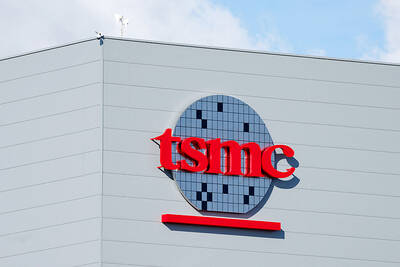The rally in palm oil prices is set to accelerate as demand for the commodity’s use in biofuel increases at a time when output is falling, veteran industry analyst Dorab Mistry said.
Benchmark futures could reach 2,700 ringgit (US$648.18) a tonne by March next year, Mistry, director at Godrej International, said in remarks prepared for delivery at an industry conference in Bali, Indonesia.
That would be their highest level in more than two years and would take the gain from the July low to about 40 percent.
“Sentiment is red hot,” Mistry said. “With lower production, biodiesel usage has become the spark to ignite the rally.”
Malaysian futures, which set the tone for global prices of the most-used edible oil, last year capped their biggest monthly advance in four years as supply concerns, strong Chinese demand and expectations for a jump in consumption in biodiesel propelled the gauge into a bull market.
The “game changer” has been Indonesian President Joko Widodo’s support for B30, a program that requires biofuels to be made using 30 percent palm oil from next year, Mistry said.
Now, the market is in “a great hurry” and has begun the job of rationing supplies by means of higher prices, he said.
Slowing output in Indonesia, the top producer, would also tighten the market, Mistry said.
Dry weather, fewer palm trees being planted in new areas, and a cutback in the use of fertilizers would result in production growth of just 1 million tonnes, he said.
Output in Malaysia, the No. 2 grower, might drop by 1 million tonnes in the first half of next year, according to Mistry’s estimate.
There is little scope for buyers to switch from palm to rival soft oils as output of soy oil and sunflower oil would only rise slightly next year, Mistry said.
Malaysian stockpiles might total 2.5 million tonnes by next month, down from 3.22 million tonnes a year earlier, he said.
There is a big opportunity in China, where soybean crushing is expected to drop, he added.
The country would import less rapeseed oil, and biodiesel demand is significant, Mistry said.
MEAT MARKET
US meat markets had so far been shielded from the effects of African swine fever wiping out Asian herds. That is starting to change.
As pork supplies plummet in China, the world’s top consumer is desperate for meat and is ramping up imports.
As a result, it is becoming harder to set longer-term protein contracts amid concerns over market volatility and changing trade flows, said Jayson Penn, chief executive officer of Pilgrim’s Pride Corp, the No. 2 US chicken producer.
“The contracting season is moving somewhat slower this year” for chicken, Penn said on a conference call with analysts following the release of third-quarter earnings.
While major fast-food restaurant chains are looking for beef contracts, “there are not many sellers willing to forward price,” he said.
On the Chicago Mercantile Exchange, hog futures for December settlement fell 9.1 percent this month, the biggest drop among major agricultural commodities.
The slump underscores the challenges for US farmers who have increased production. China has bought US pork in stops and starts, contributing to elevated volatility in hog futures.
Other commodities:
‧Spot gold on Friday settled at US$1,514.43 an ounce, up 0.7 percent for the week.
‧Silver on Friday eased to US$18.12 an ounce, but it was up 0.7 percent for the week.
Additional reporting by staff writer

Taiwan Semiconductor Manufacturing Co (TSMC, 台積電) secured a record 70.2 percent share of the global foundry business in the second quarter, up from 67.6 percent the previous quarter, and continued widening its lead over second-placed Samsung Electronics Co, TrendForce Corp (集邦科技) said on Monday. TSMC posted US$30.24 billion in sales in the April-to-June period, up 18.5 percent from the previous quarter, driven by major smartphone customers entering their ramp-up cycle and robust demand for artificial intelligence chips, laptops and PCs, which boosted wafer shipments and average selling prices, TrendForce said in a report. Samsung’s sales also grew in the second quarter, up

LIMITED IMPACT: Investor confidence was likely sustained by its relatively small exposure to the Chinese market, as only less advanced chips are made in Nanjing Taiwan Semiconductor Manufacturing Co (TSMC, 台積電) saw its stock price close steady yesterday in a sign that the loss of the validated end user (VEU) status for its Nanjing, China, fab should have a mild impact on the world’s biggest contract chipmaker financially and technologically. Media reports about the waiver loss sent TSMC down 1.29 percent during the early trading session yesterday, but the stock soon regained strength and ended at NT$1,160, unchanged from Tuesday. Investors’ confidence in TSMC was likely built on its relatively small exposure to the Chinese market, as Chinese customers contributed about 9 percent to TSMC’s revenue last

With this year’s Semicon Taiwan trade show set to kick off on Wednesday, market attention has turned to the mass production of advanced packaging technologies and capacity expansion in Taiwan and the US. With traditional scaling reaching physical limits, heterogeneous integration and packaging technologies have emerged as key solutions. Surging demand for artificial intelligence (AI), high-performance computing (HPC) and high-bandwidth memory (HBM) chips has put technologies such as chip-on-wafer-on-substrate (CoWoS), integrated fan-out (InFO), system on integrated chips (SoIC), 3D IC and fan-out panel-level packaging (FOPLP) at the center of semiconductor innovation, making them a major focus at this year’s trade show, according

DEBUT: The trade show is to feature 17 national pavilions, a new high for the event, including from Canada, Costa Rica, Lithuania, Sweden and Vietnam for the first time The Semicon Taiwan trade show, which opens on Wednesday, is expected to see a new high in the number of exhibitors and visitors from around the world, said its organizer, SEMI, which has described the annual event as the “Olympics of the semiconductor industry.” SEMI, which represents companies in the electronics manufacturing and design supply chain, and touts the annual exhibition as the most influential semiconductor trade show in the world, said more than 1,200 enterprises from 56 countries are to showcase their innovations across more than 4,100 booths, and that the event could attract 100,000 visitors. This year’s event features 17